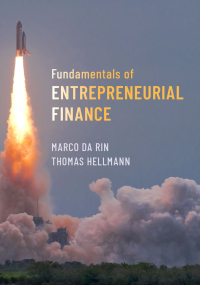Answered step by step
Verified Expert Solution
Question
1 Approved Answer
Data table (Click on the icon to import the table into a spreadsheet.) Margin (%) 13.5% Price (US$) 2,431.01 Change US$ Price (%) Fixed Rmb



Data table (Click on the icon to import the table into a spreadsheet.) Margin (%) 13.5% Price (US$) 2,431.01 Change US$ Price (%) Fixed Rmb Pricing of the PT350 Plasma Cutting Torch Cost Margin Price Year (Rmb) (Rmb) (Rmb) 2007 16,000 2,500 18,500 2008 15,400 2009 14,800 2010 14,700 2011 14,200 2012 14,400 2013 14,600 2014 14,800 Cumulative Average Rate (Rmb/US$) 7.61 6.95 6.83 6.77 6.46 6.31 6.15 6.16 Peng Plasma Pricing. Peng Plasma is a privately held Chinese business. It specializes in the manufacture of plasma cutting torches. Over the past eight years it has held the Chinese renminbi price of the PT350 cutting torch fixed at Rmb 18,500 per unit. Over that same period it has worked to reduce costs per unit, but has struggled of late due to higher input costs. Over that same period the renminbi has continued to be revalued against the U.S. dollar by the Chinese government After completing the table -assuming the same price in renminbi for all yearsanswer the following questions. a. What has been the impact of Peng's pricing strategy on the US$ price? How would you expect their US dollar-based customers to have reacted to this? b. What has been the impact on Peng's margins from this pricing strategy? Complete the table below. (Round all values as in year 2007) Fixed Rmb Pricing of the PT350 Plasma Cutting Torch Cost Price Margin Price Change US$ Margin (Rmb) Average Rate (Rmb/US$) Year (Rmb) (Rmb) (%) Price (%) (US$) 2.431 01 2007 16.000 2,500 18,500 13.5 7 61 2008 18.500 6.95 15.400 14,800 2009 18,500 6.83 2010 14.700 18,500 6.77 2011 14,200 6.46 18,500 18,500 2012 14.400 6.31 2013 14,600 18,500 6.15 2014 14,800 18,500 6.16 Cumulative Peng Plasma Pricing. Peng Plasma is a privately held Chinese business It specializes in the manufacture of plasma cutting torches. Over the past eight years it has held the Chinese renminbi price of the PT350 cutting torch fixed at Rmb 18,500 per unit . Over that same period it has worked to reduce costs per unit, but has struggled of late due to higher input costs. Over that same period the renminbi has continued to be revalued against the U.S. dollar by the Chinese government After completing the table assuming the same price in renminbi for all years answer the following questions, a. What has been the impact of Peng's pricing strategy on the US$ price? How would you expect their US dollar-based customers to have reacted to this? b. What has been the impact on Peng's margins from this pricing strategy? a. What has been the impact of Peng's pricing strategy on the US$ price? (Select the best choice below) A. By maintaining a constant price in Rmb, as the average exchange rate (Rmb/US$) increased the price in US$ decreased B. By maintaining a constant price in Rmb, as the average exchange rate (Rmb/US$) increased, the price in US$ increased. O C. By maintaining a constant price in Rmb, as the average exchange rate (Rmb/US$) decreased, the price in US$ increased. OD. By maintaining a constant price in Rmb as the average exchange rate (Rmb/US$) decreased the price in US$ decreased. O O O O How would you expect their US dollar-based customers to have reacted to this? (Select the best choice below.) O A. As the price in US$ remains constant , the US dollar-based customers would be tempted to look for cheaper alternatives. B. As the price in US$ increased the US dollar-based customers would be tempted to look for cheaper alternatives, O C. As the price in US$ decreased the US dollar-based customers would be tempted to look for cheaper alternatives. O D. There is not enough information to answer this question. b. What has been the impact on Peng's margins from this pricing strategy? (Select the best choice below. O A. Peng's margins in Rmb increased steadily as the average exchange rate (Rmb/US$) decreased B. Peng's margins in Rmb increased steadily as the average exchange rate (Rmb/US$) increased. O C. Peng's margins in Rmb decreased steadily as the average exchange rate (Rmb/US$) decreased. O D. Peng's margins in Rmb decreased steadily as the average exchange rate (Rmb/US$) increased
Step by Step Solution
There are 3 Steps involved in it
Step: 1

Get Instant Access to Expert-Tailored Solutions
See step-by-step solutions with expert insights and AI powered tools for academic success
Step: 2

Step: 3

Ace Your Homework with AI
Get the answers you need in no time with our AI-driven, step-by-step assistance
Get Started


